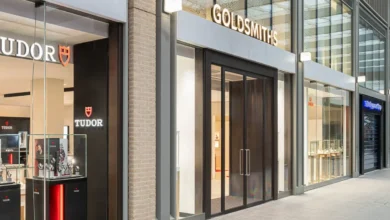
Register to get 1 free article
Reveal the article below by registering for our email newsletter.
Want unlimited access? View Plans
Already have an account? Sign in
The Christmas peak is looming, and for many eCommerce brands that means a whole host of meetings, planning and code freezes, that can understandably mean that many marketers feel their fate is already sealed until the new year when it comes to SEO performance.
We’ve been search marketers in retail eCommerce for ten years now, so we come across this problem often. Thankfully, there are a few things you can do to increase the chances of boosted organic rankings in Google that can have a meaningful impact before Christmas.
When does peak hit organic search for online jewellery?
Our latest Jewellery Market Report in part considers historic season trends of the top keywords in the market. Based on this data, we can expect search interest to initially jump w/c 23rd September, before hitting full swing w/c 28/10. Sickeningly soon.
What can you do that will have a meaningful impact on your organic traffic before peak season?
- Copy
Words on the page are still a huge ranking factor. As advanced as Google’s ranking algorithms are, they still need content on the page to better understand what that page is about. If you don’t have 700+ words on your important category and subcategory pages, we’d recommend fixing that asap.
While you don’t want to get that many words in the way of your conversion funnel, placing content strategically around the page (and saving the lions share for the bottom of the page) can drastically improve the visibility of your page. You can see a good example of this on 77 Diamonds, who coincidentally rank on page 1 for ‘engagement rings.’
- Meta Details
More specifically, your title tags and meta descriptions. It can be daunting to start messing with your title tags this close to peak season, and I’d perhaps warn against any advanced CTR (click-through rate) testing until the new year, but that doesn’t mean you can’t ensure that your title tags are targeting the correct and most lucrative terms for your business.
Google has recently tested title tags with increased font size, meaning that some of your page titles may be truncated in the search results. You can check your title tags with a simple google of ‘site:[yourdomain]’ to get a sense of how your most important pages look.
Meta descriptions are less impactful to rankings but can affect your CTR. Using the same search as above, check how they look. Are they complete sentences, or do they end in a ‘…’? If the latter, you may not have set your meta descriptions correctly, or have set them at the wrong length. Also, and perhaps this goes without saying, but make sure you mention your primary keyword in the meta description.
- Schema
Schema is one of the most prominent aspects of SEO in 2019, and its importance is set to grow more into 2020. You may struggle with this if you’re in a code freeze, but it’s relatively simple of a developer to make site-wide changes.
Schema is a form of structured data markup that helps search engines quickly identify aspects of a page. You probably already have product and Organization schema on your site, even if you’re not aware of it, but there are so many more types that can increase the amount of space you take up in search engine results. Rather than bore you to death here, Let me recommend a pretty comprehensive guide we made on schema for e-commerce sites.
- Link Checks
Backlinks are and likely always will play a huge part in the organic visibility of your site. Methods to get more backlinks are varied and often involve a lot of effort, yet there are a couple of ways to quickly gain backlinks without putting hours into content creation and outreach.
One of my favourites is to check the destination URLs of your existing backlinks. We very often see domains linking to pages which return a 404 or 410 code as they no longer exist, effectively cutting off the link equity before it reaches your site.
Goldsmiths, for example, have www.goldsmiths.co.uk/hublogin. You’ll notice the link doesn’t work, yet this URL has 150 backlinks from 26 different domains including Elle.
The quickest way to find these is Via Ahrefs’ Best By Links tool, filtering to 404/410 pages. However, it’s a (very valuable) paid tool.
If you’re not prepared to pay, go to Search Console and export your top externally linked pages via the Links tab, then run them through a bulk status code checker such as httpstatus. If any return a 404 or 410 code, consider 301 redirecting them to the most relevant live page.
- Unlinked Mentions
Another tactic you can use to capitalise on your inherent brand equity is by looking for uses of your brand name in news and blogs around the web, thanking them for talking about you, then kindly asking them to add a link to that brand mention.
You can find sites that mention your brand for free by Googling things like “[Your Brand Name] -site:[yourdomain.co.uk]” however unless you pay for a tool such as Ahrefs, Buzzsumo or SEMRush you’ll have to check if they’re linking to you or not manually.
As it’s nearly Christmas, if you don’t want to pay for those tools, message me on LinkedIn, and I’ll send you a report with your unlinked mentions/links for 404 pages.
Brett Janes is content director at Salience







